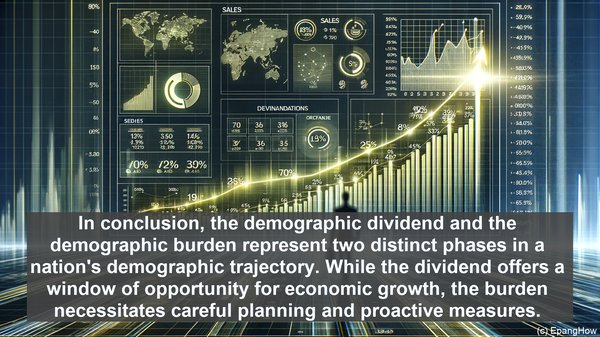Introduction: The Intricacies of Population Dynamics
Greetings, ladies and gentlemen! Today, we embark on an exploration of population dynamics, focusing on two crucial concepts: the demographic dividend and the demographic burden. These terms, though seemingly similar, represent two distinct phases in a nation’s demographic journey. Let’s delve deeper.
Demographic Dividend: A Window of Opportunity
The demographic dividend refers to a phase in a country’s demographic transition characterized by a significant proportion of the population falling into the working-age group. This phase arises due to declining fertility rates and mortality rates, leading to a ‘bulge’ in the working-age population. With a larger workforce, the potential for economic growth and development increases manifold.
Factors Amplifying the Demographic Dividend
Several factors contribute to the realization of the demographic dividend. Firstly, quality education and skill development programs equip the working-age population with the necessary competencies, enhancing their productivity. Secondly, favorable government policies, such as investment in infrastructure and healthcare, create an enabling environment for economic growth. Lastly, a conducive business environment, including access to finance and technology, attracts investments, further bolstering the dividend’s impact.
Harnessing the Demographic Dividend: A Case Study
Let’s consider the case of Country X, which successfully harnessed the demographic dividend. Recognizing the potential, the government invested in education, ensuring a skilled workforce. Simultaneously, they implemented policies to attract foreign direct investment, leading to the establishment of industries and job creation. As a result, Country X witnessed a surge in productivity and a rise in per capita income, transforming it into an economic powerhouse.
Demographic Burden: The Challenges Ahead
While the demographic dividend presents a promising phase, it is not perpetual. As the working-age population ages, the dependency ratio, i.e., the ratio of dependents to the working-age population, starts to increase. This transition gives rise to the demographic burden. With a higher dependency ratio, the pressure on the working-age population intensifies, impacting productivity and economic growth.

Mitigating the Demographic Burden
To address the challenges posed by the demographic burden, proactive measures are essential. These include comprehensive healthcare systems to ensure the well-being of the aging population, pension and social security schemes to provide financial stability, and initiatives to encourage active aging and skill retention. By adopting a holistic approach, nations can navigate the demographic burden more effectively.

